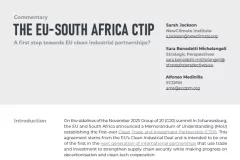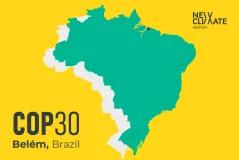In preparation of the new international climate agreement to be adopted in Paris in 2015, all countries are asked to put offers on the table on how and how much they are willing to reduce their greenhouse gas emissions after 2020, so called “intended nationally determined contributions” (INDCs). In order to achieve an ambitious and equitable agreement, INDCs of countries with similar circumstances will have to be judged by others to be equally ambitious. Illustrating that this is the case will be fundamental to the success of the new climate agreement, because countries will want to be sure that other countries also contribute with their “fair share”.
But how can you judge whether a country’s contribution is fair and ambitious in comparison to others, when all 194 countries are very different in development, industrial structure, capabilities and responsibilities – and these aspects even change over time?
This blog provides a quick overview of approaches that can be used to undertake this assessment. No single approach is “better” than the other; they all have their pros and cons. Optimally, all five approaches would be considered. The approaches may in many cases come to very similar results, but could also reveal differences. Additionally, these approaches not only allow the comparison of country offers in the international process, but can also support the countries' domestic processes for the development of INDCs.
- Comparison to business as usual (BAU): the ambition level can be demonstrated with a comparison to a historic trend or a projection to the future - the business as usual scenario. For a country without climate policies, the emission trend can be significantly altered through the introduction of new policies. Stronger deviation from the BAU scenario means more ambition. The downside of this approach is that it is difficult to define a BAU scenario as many unforeseeable factors, such as the economic downturn of 2008/9, influence future emission trends. Furthermore many countries have already, and over time all countries should implement climate policies that somehow need to be considered, rendering it even more difficult to define appropriate BAU scenarios.
- A comparison to effort sharing: the extent to which a particular ambition level is “fair” can be illustrated through the comparison to effort sharing approaches. A wide range of literature allocates global emissions and emission reductions to individual countries based on effort sharing principles. The principles include equality (e.g. that per capita emissions should converge for all countries), responsibility (e.g. those who emitted more in the past now have to reduce more) or capability (e.g. those with more economic powers should do more). We summarised such studies for the IPCC Fourth (Box 13.7 and related papers) and the Fifth Assessment Report (Chapter 6 and related paper). Depending on the effort sharing approach chosen, results may differ significantly (see country ranges of our Climate Action Tracker). Still the full range of results can be an indication for the compatibility of the countries contribution with the 2°C goal.
- Comparison to mitigation potential: Many countries and research institutions have undertaken studies to assess options to mitigate greenhouse gas emissions and the associated costs. One can group the options in three categories: options at negative or zero costs, options with some moderate costs, but also some co-benefits and options with ambitious reductions (see country examples). If the country’s contribution is in the range of the co-benefits or the ambitions reductions, it can be considered ambitious. The downside of this approach is that costs are always displayed against a business as usual scenario, which is difficult to define (see above). The calculations require so many assumptions that they become easily in-transparent and the uncertainties associated with the results are often very large.
- Comparison to decarbonisation indicators or benchmarks: A number of indicators can be used to compare countries’ circumstances and developments. On the national level one can for example compare the status and trend of emissions per capita, energy use per capita or emission intensity of the energy mix. These indicators can tell something about the starting point of a country and the level of action planned for the future. In addition, sectoral indicators can be used such as emissions per kilometre travelled or per ton of cement or steel produced. For example, cement is produced with less emissions per tonne of cement in China compared to the US. It is the opposite for iron and steel (see our Climate Action Tracker update). A contribution would be seen as ambitious if the trend in one of the indicators is significantly changed and/or if the trend of the indicators is in line with what would be necessary for a 2°C compatible pathway. The advantage of this method is that it is close to real action on a sectoral level and therefore more accessible to a broader audience.
- Comparison to a good practice policy package or a policy menu: Finally one can check if a country implements policies or addresses barriers like its peers or the best in class. A contribution would be ambitious, if it includes many policies that are considered best practice. Or the other way around, a contribution would be unambitious if the country would not implement the policies that all of its peers have already successfully implemented. Examples are support policies for renewables or energy efficiency standards for buildings, which are implemented today in the majority of countries (see report). The critical element of this approach is the list of policies that is to be evaluated. The UNFCCC secretariat has started to prepare policy menus. The Climate Action Tracker team has implemented this approach for Australia and Mexico.







